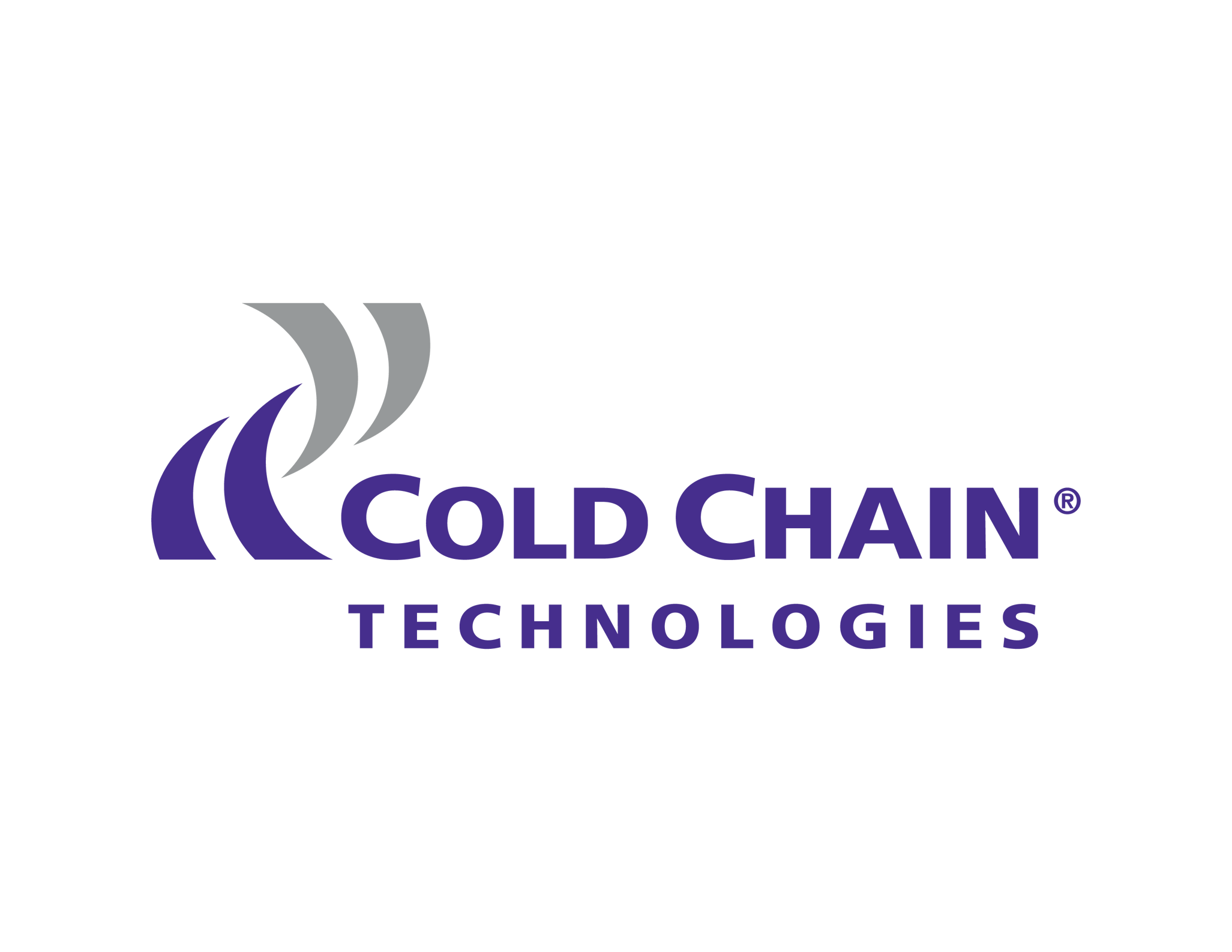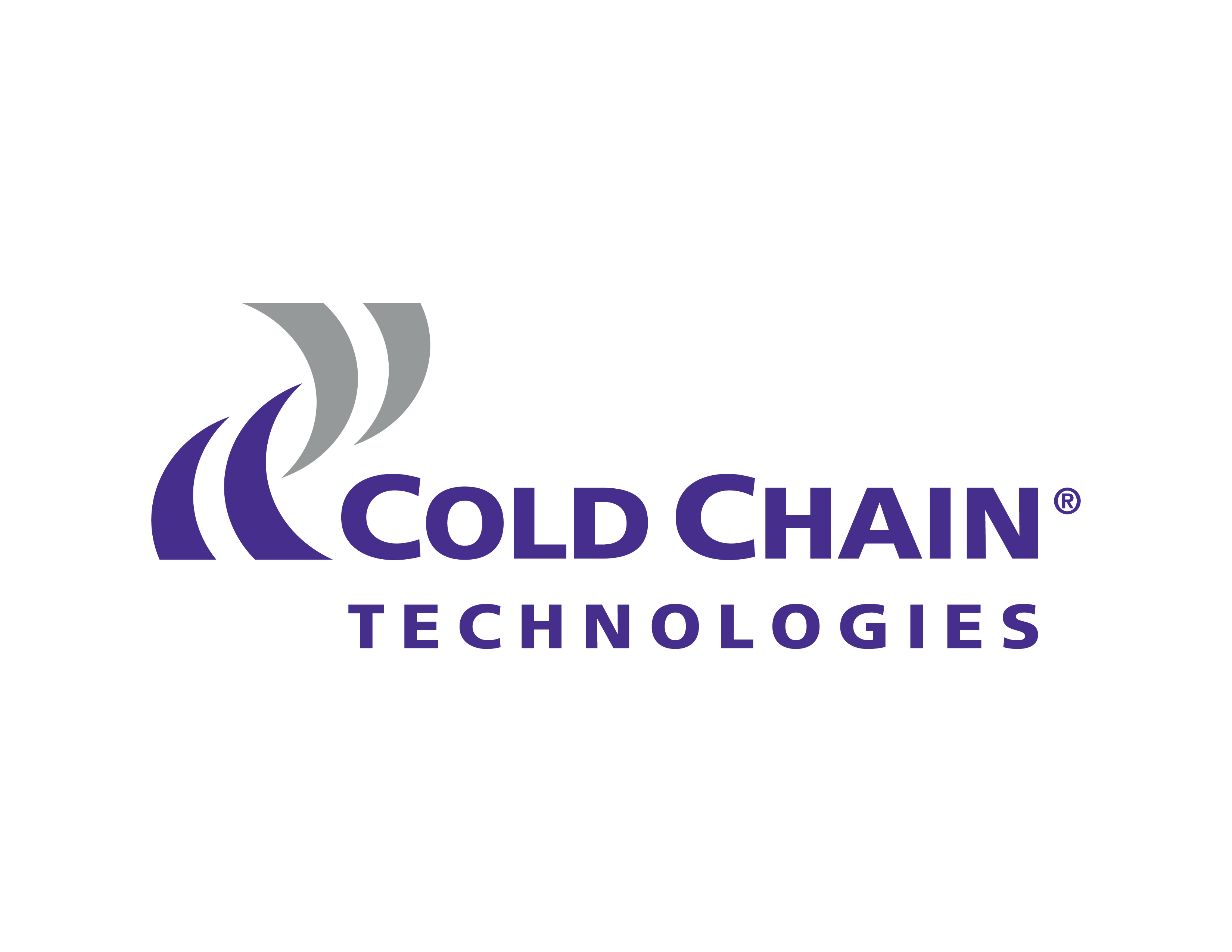Cold Chain refers to an uninterrupted flow of a temperature-controlled shipment from manufacturing through delivery to end-user. This requires knowledge and control of the shipping environment, package design, duration of the shipment(s) and critical control points throughout the process.
Cold chain is necessary to control product efficacy, product safety, and adhere to relevant regulatory requirements. Temperature-sensitive products that require cold chain solutions may include: pharmaceuticals, biological, diagnostic materials, lab samples, chemicals, and foods.
General Cold Chain Information
If the product is regulated by the FDA, such as a pharmaceutical article, please speak with one of our experienced staff members. If the product is a food item, please see our simple packout guidelines.
In the U.S., shipment of temperature sensitive articles is regulated by the Food and Drug Administration (FDA) (https://www.fda.gov). According to Code of Federal Regulations (CFR) Title 21, Section 211.94 (b), “Container closure systems shall provide adequate protection against foreseeable external factors in storage and use that can cause deterioration or contamination of the drug product.”
Further regulations related to the shipment of cold chain items may be found in:
US Pharmacopoeia
ASTM D-3103-99
PDA, Technical Report #39
FDA
For diagnostic specimens and infectious substances, the DOT regulates this transport under provisions of Section 49 CFR part173.199 and 173.196, which states: “Special packaging (triple packaging, consisting of a primary receptacle, a secondary packaging, and an outer packaging) is required for shipping a diagnostic specimen.”
There are several organizations that address cold chain guidelines, including the:
- International Safe Transit Associations (ISTA) provides programs, services and activities that assist in packaged-product distribution.
- American Society for Testing and Materials (ASTM) develops international technical standards for materials, products, systems, and services.
- Parenteral Drug Association (PDA) and its subgroup, the Pharmaceutical Cold Chain Discussion Group (PCCDG). PCCDG is an informational exchange group that educates its members on global shipping and distribution of temperature-sensitive medicinal products through trade and regulatory organizations. This group also develops guidelines and proposes standards for validation of shipping and distribution of the products.
- U.S. Pharmacopeia <1079> provides manufacturers, distributors, and transporters with assistance in handling pharmaceutical items. The document includes information on storage and shipping practices to ensure the integrity of the product from manufacturer to end-user.
PDF Download » - ISTA Guide 7D: Thermal Control Transport Packaging for Parcel Delivery System Shipment “Test procedure 7D is a development test to evaluate the effects of external temperature exposures of individual packaged products shipped through a parcel delivery system.”
PDF Download » - ASTM D-3103, Standard Test Method for Thermal Insulation Quality of Packages “This test method covers the determination of the thermal insulation quality of a package and its enclosed packaging from temperature differentials between the packaged item and the outside environment.”
- PDA’s Technical Report No. 39: Cold Chain Guidance for Medicinal Products: Maintaining the Quality of PDA Temperature-Sensitive Medicinal Products Through the Transportation Environment “This technical report provides guidance to both the pharmaceutical industry and regulators on the essential principles and practices for shipment of products which require controlled temperatures during transit while providing a design approach to the development of specialized packages and systems which will protect temperature-sensitive products during transportation.”
Read More »
Transit duration is the amount of time that a shipment remains in transit. External temperature profiles refer to the ambient temperature that the shipping container witnesses during its transit process. There are a number of acceptable means by which the ambient profile can be determined (summer highs, winter lows). Our engineering and technical services teams have many years of experience providing customers with both means of determining or mapping these external temperatures through existing temperature data, en route data collection, and programs specially aimed at mapping a specific set of routes.
Pre-qualification (PQ), or Design Evaluation (DE), is the initial development of a thermal package design based on the needs assessment of the user. A successful pre-qualification test generally provides assurance that a package design will pass a final qualification test.
The Final Qualification test, sometimes referred to as a Validation, provides reasonable assurance that the qualified product or process will produce similar results under stated conditions. Upon completion of an acceptable design, the Final Qualification is performed demonstrating reproducibility (often at n=3). Engineering and Technical Services issues the Final Qualification Report, which includes all data, certifications, and proof of validated equipment necessary for the rigorous review of a full audit.
Insulated Shipping Containers Information
Yes, KoolTemp® molded EPS containers are recyclable. In the broadest sense, EPS is a 100% recyclable lightweight rigid cellular plastic that containers 98% air. It is completely inert. For a detail review of EPS and the environment, please visit our manufacturer partner’s website, Foam Fabricators, Inc. Click here for Foam Fabricator’s recycling brochure. EPS may be brought to designated drop-off locations, recycling centers that accept polystyrene (#6), or sent to mail-back locations.
Yes, assuming that the molded PUR insert has not been damaged during a previous shipment. The outer corrugate box must be replaced. To determine the number of times that a PUR container may be reused, an internal quality program should be implemented to monitor physical integrity.
- Valuable payloads that require 2°C to 8°C protection during demanding shipping conditions – choose KoolTemp PUR Polyurethane Insulated Containers. These environmentally conscious (non-ozone-depleting) containers feature a modular design that allows for easy pack out, replacement of corrugate for reuse, and recycling.
- Temperature-sensitive applications – choose KoolTemp EPS Molded Insulated Containers, offered in a variety of thicknesses; or KoolTemp EPS Panel Sheet Insulated Containers: space-saving, durable, and efficient thermal protection in a variety of styles lined with lightweight, precision-cut expanded polystyrene (EPS).
- Pallet-sized loads – choose KoolTemp Insulated Pallet Containers, which provide excellent, uniform thermal protection with extruded polystyrene (XPS, also abbreviated as EXP) and sleeves of Koolit Refrigerant Bricks.
- Small, temperature-sensitive products – choose KoolTemp Insulated Envelopes, lightweight, durable, thermally insulated envelopes designed with a spacious payload chamber for your temperature-sensitive articles, and our Koolit Gel Packs.
- Pre-qualified shipping systems – choose from among CCT’s pre-qualified KoolTemp shipping solutions that provide many hours of thermal protection for temperature-sensitive products.
-
Many factors influence your choice of insulation, including:
- acceptable temperature range and excursions
- external ambient temperatures during shipment
- shipping method, duration, and costs
- size, dimensional weight, and ergonomic requirements and budget.
Contact our experienced staff for assistance in this decision making process.
-
The R-value is a measure of thermal resistance, or a material’s ability to prevent heat loss. A higher R-value correlates with a greater ability to prevent heat loss. The K-value is a measure of thermal conductivity that is calculated by dividing insulation thickness by its R-value. When the R-value is high, the corresponding K-value is low.
Since the cost of insulation increases with R-value, a cost-benefit analysis is always required to choose the best insulation for a specific application. Listed below is a summary of R-value by type of insulation. These values are general guidelines based on one-inch thick insulation.
EPS (expanded) and XPS (extruded) are different types of manufactured polystyrene. The EPS is formed by molding tiny pellets of polystyrene. It’s used in our molded and panel-sheet insulated containers, and provides lightweight, cost effective thermal protection (R-value = 4 per 1″), and enhanced drop cushioning properties. XPS (EXP) is formed by an extrusion process of polystyrene. It’s used in our pallet containers, which offer excellent, uniform thermal protection (R-value = 5) for large payloads.
In addition to choosing the appropriate container size and type of insulation, wall thickness is also an important consideration. Generally, chilled products sent next day or overnight that need to stay cool will arrive satisfactorily using ½” to 1″ thicknesses of insulation. Longer duration shipments (two days or more) and more exacting maintained temperatures will require a thicker wall of insulation (1-½” to 2″).
See pack out instructions included with your product or contact us to request.
Yes, to minimize heat loss, fill voided space with dunnage (bubblewrap, newspaper, etc.). This reduces the chance of heat pockets forming in empty air channels surrounding a product. It also provides additional protection from movement within the shipping container during transit.
Yes, to minimize heat loss, fill voided space with dunnage (bubblewrap, newspaper, etc.). This reduces the chance of heat pockets forming in empty air channels surrounding a product. It also provides additional protection from movement within the shipping container during transit.
SDSs, or Safety Data Sheets, provide health, safety, spill, and response information to the Occupational Safety and Health Administration (OSHA) on identified harmful substances.
Label the top of the box to ensure that it is shipped upright.
Refrigerants Information
Koolit® bottles are reusable if there is no sign of damage. Koolit® gel packs and Koolit bricks may be reused under certain conditions. For more information, an internal quality program should be implemented to monitor physical integrity.
Yes, assuming that the molded PUR insert has not been damaged during a previous shipment. The outer corrugate box must be replaced. To determine the number of times that a PUR container may be reused, an internal quality program should be implemented to monitor physical integrity.
Yes, Koolit® gel packs contain an environmentally safe water soluble starch in a plastic pouch. To recycle, simply cut open a thawed gel pack and dispose of its liquid content in the normal waste stream. The pouch may be recycled in centers that accept plastic.
Koolit Refrigerants should be disposed of in accordance with all relevant local, state, and federal regulations. In most cases, this means allowing the contents to enter any standard waste water stream.
Insulin must be transported with care since insulin is susceptible to excessive heat and freezing. Some types of insulin must remain below 30°C (86°F). In this case, refrigerants might not be necessary, but a temperature indicator should be used to confirm that the proper temperature range is maintained.
EPS (expanded) and XPS (extruded) are different types of manufactured polystyrene. The EPS is formed by molding tiny pellets of polystyrene. It’s used in our molded and panel-sheet insulated containers, and provides lightweight, cost effective thermal protection (R-value = 4 per 1″), and enhanced drop cushioning properties. XPS (EXP) is formed by an extrusion process of polystyrene. It’s used in our pallet containers, which offer excellent, uniform thermal protection (R-value = 5) for large payloads.
- Tightly fitting packaging configurations – choose Koolit Foam Bricks since they remain uniform in shape while frozen or thawed.
- Long-lasting and economical maintenance of refrigerated products – choose all other Koolit Gel Packs, available in a variety of pouch materials, and gel structures.
- Wrap-around protection – choose Koolit Saddle Bags (saddlebags, mats) that provide form-fitting protection for temperature-sensitive products.
- Rough environments or reuse – choose Koolit Gel Bottles, which feature a tough, puncture-proof, blow-molded high-density plastic bottle.
- Long-lasting and economical maintenance of frozen products – for a safe dry ice substitute, choose Koolit Gel Packs (500-ST Series).
Yes, in most cases we suggest a product-to-refrigerant weight ratio of one-to-one (1:1) to one-to-two (1:2). For example, for two pounds of product, use two to four pounds of refrigerants. Smaller payloads, however, may require more refrigerants than the ratio would dictate.
At a minimum, for the most efficient cooling, you should place a refrigerant on top of your product since heat rises. For best protection, surround all six sides of your product with refrigerants.
Depending on the temperature of the environment in which refrigerants are used, gel packs, foam bricks, and gel bottles can stay cold for as long as 12 to 24 hours (or longer if placed in an insulated container). Koolit® foam bricks surpass the gel packs and gel bottles for cooling longevity.
Yes, prior to use, refrigerants for maintaining cool or frozen temperatures must be brought to the appropriate temperature in either a freezer or refrigerator. It takes 12 to 24 hours to precondition individual refrigerants. Preconditioning a full case takes 24 to 48 hours. It takes up to three weeks to condition multiple pallets to allow for thorough freezing. For ambient shipments, refrigerants can be preconditioned by placing them in warm water.
A phase change refers to a change from one physical form to another at a specific temperature. For example, water changes from frozen ice to liquid water at 0°C.
A eutectic mixture is a mixture of two or more substances with a melting point lower than that of individual substances. A eutectic point is the temperature that is maintained as the mixture transforms from solid to liquid (or visa versa). The Koolit Gel Pak 500-ST Series contain a suppressed temperature gel (carboxymethylcellulose) that is a eutectic mixture. The ST Series gels have a eutectic point of -23°C (-10°F). All other Koolit Gel Paks have a freezing point of 0°C (32°F), and a eutectic point of -0.4°C (-31.3°F).
Insulin must be transported with care since insulin is susceptible to excessive heat and freezing. Some types of insulin must remain below 30°C (86°F). In this case, refrigerants might not be necessary, but a temperature indicator should be used to confirm that the proper temperature range is maintained.
Dry ice is often used for transporting frozen shipments since it offers extended cooling for the payload. Dry ice, which is solid carbon dioxide, maintains a -78°C (-95°F) temperature. Molded containers are ideal for use with dry ice.
Dry ice sublimates or changes directly from solid to gas, without a liquid phase. The rate of sublimation must be taken into account when designing a container system since it gets smaller in size. Dry ice sublimates at a rate of three to eight pounds per day, depending on the thermal properties of the container and external temperature profile. One pound of dry ice will sublimate into 8.3 cu. ft. of carbon dioxide gas. Slabs of dry ice last longer than pelletized dry ice, which sublimates faster. Be sure that your product will remain fully secure within the container, especially through time after the dry ice shrinks in size. Make sure to surround your product (top, bottom, sides) to ensure uniform freezing.
The Koolit® 500-ST Series gel packs can be used as a dry ice substitute. They are available in a variety of weights/sizes and are best for the shipment of products that must maintain below freezing temperatures.
Koolit® Refrigerants will last and be functional as long as they remain intact and are not punctured.
Yes, Koolit® Refrigerants can be heated but should not be placed in a microwave or in a heated oven.
Find the latest CCT cold chain technical resources here.
Find CCT’s policies and certifications here.
ISO Certificate
Terms & Conditions
Quality Policy
Privacy Policy
Why Work at CCT?
CCT is an ISO 9001:2015 certified global leader in the development and delivery of insulated thermal packaging solutions that protect the integrity of temperature-sensitive products in the life sciences industry. With over five decades of innovation in the cold chain industry, we understand its logistics and applications as well as its demands and its extremes.
Our mission is to design and deliver temperature-controlled distribution solutions which meet the high quality, performance and regulatory expectations of the life sciences industry. Our affiliated design and testing laboratories are highly recognized throughout the industry as world-class. In addition, we have won several industry awards for our innovations and superb products.
Primarily US-based, CCT is now aggressively expanding in international markets.


